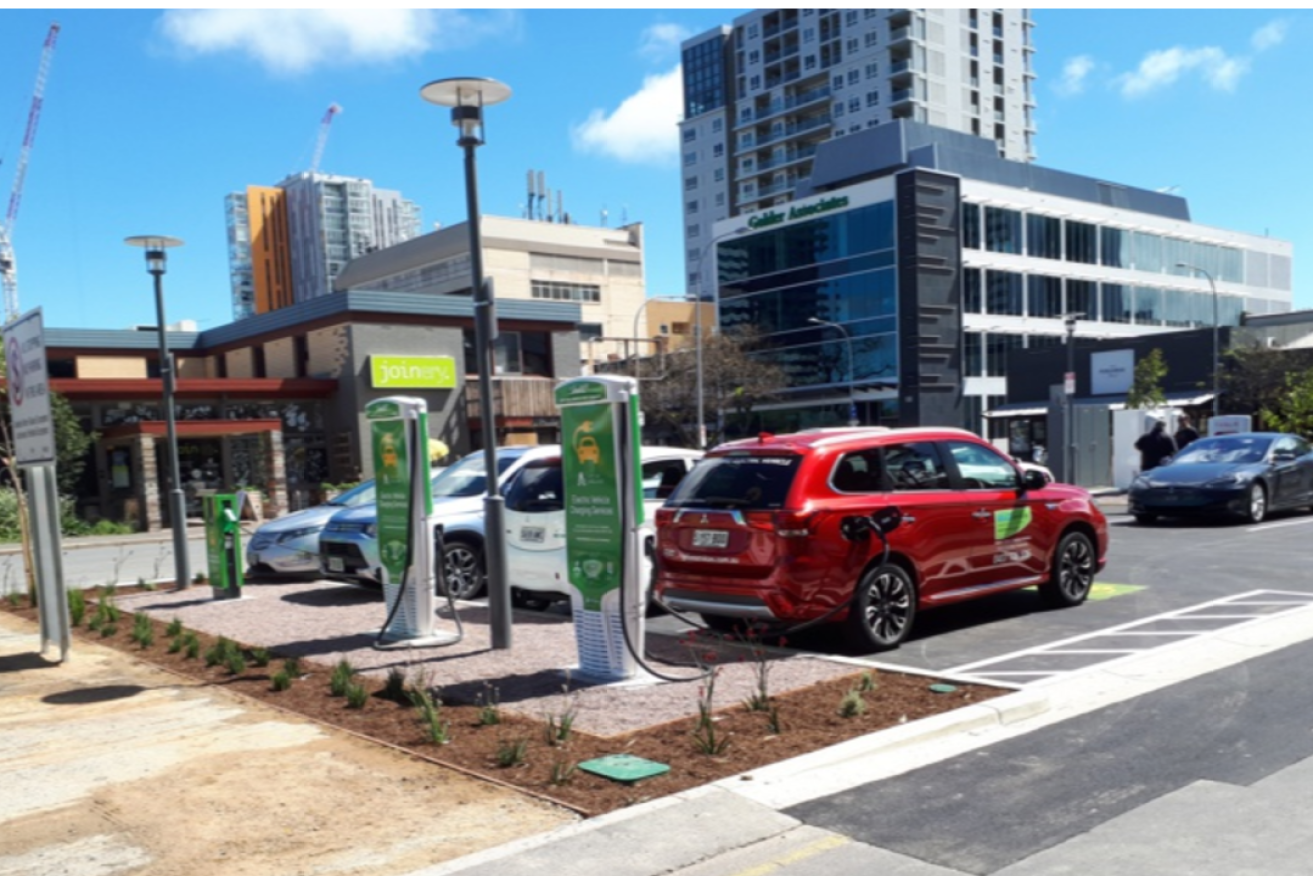Bumpy road ahead for electric car transition, industry group warns
Charging stations every 50 to 75km on major highways and “strong government intervention” to overcome EV supply problems will be required for Australia to have a smooth transition to low-emission vehicles, the state’s peak automotive industry group says.


An electric vehicle charging station in the Adelaide CBD. Photo: AEVA SA
The Albanese Government last month sought the views of industry and the public after releasing its National Electric Vehicle Strategy Consultation Paper, which sets out a range of public policy goals for reducing emissions in Australia’s transport sector.
Among the federal government’s objectives is to encourage a “rapid increase” in EV demand and establish the “systems and infrastructure to enable rapid uptake of EVs”.
The Motor Trade Association of SA/NT, which represents more than 5500 businesses in the automotive retail, service and repair industry, submitted to the review that it “fully supports and welcomes the oncoming transition” to zero and low emission vehicles (ZLEV).
But it also warned that “an uncoordinated and ad-hoc transition will lead to worse outcomes for both automotive businesses and consumers”.
The association said one of its “guiding principles” on ZLEV policy was the federal government should mandate CO2 targets – but not electric vehicle targets.
“The MTA and other automotive associations do not recommend in setting vehicle specific targets as they unfairly distort the market and do not take into consideration nuance and specificity in certain sectors of the market,” the MTA submitted on October 31.
“For example in regional areas where a hydrogen, hybrid, plug-in hybrid or even a more efficient ICE (internal combustion engine) would be more appropriate than a battery electric vehicle.”
The MTA said Australia would also need a “comprehensive and fit-for-purpose rapid charging network” to combat “range anxiety” for drivers.
“The benchmark for public charging stations is one charging station for every 10 EVs and charging banks of between six to eight chargers every 50 to 75km along major highways,” the MTA submitted.
The federal government’s current stated goal is to have charging stations at an average interval of 150km on major roads.
The South Australian government has also granted the RAA $12.35 million to install a “border-to-border” EV charging network, which will feature 140 charging sites – consisting of 536 charging stations – across the state.
The SA network is expected to be completed by January 2024.
The MTA warned that Australia faces other challenges with EV uptake, including its status as a right-hand drive market, consumer preferences for larger vehicles and lack of local car manufacturing.
The association said attracting ZLEVs to Australia’s “small, right-hand drive market” will necessitate a “clear national framework and strong government intervention”.
“As only 10% of the world vehicle market is currently right-hand drive the majority of production capacity will go to… left-hand drive vehicles,” the MTA said.
“There exist challenges that need to be addressed to ensure a smooth transition. A large land mass and relatively sparse population, small vehicle market globally, consumer preferences for larger vehicles, and no local vehicle manufacturing will all impact on the transition to ZLEVs.”
But the MTA also submitted that it opposes bans on internal combustion engine cars, claiming this would “limit consumer choice and remove options for meeting car owners’ needs and Australia’s emission reduction targets”.
“Adding penalties onto ICE vehicles, particularly second-hand vehicles will cause a drop in trade-in value for those switching to ZLEV for the first time,” the MTA said.
“The majority of Australian consumers will be relying on this trade-in value to afford a ZLEV, and policies that penalise or ban ICE vehicles will reduce the affordability of ZLEV.
“This will also exacerbate the affordability of vehicles for those on lower incomes that may only be able to afford a second-hand ICE or hybrid vehicle.”
The MTA instead called for the removal of stamp duty, GST and the luxury car tax on EVs.
EVs represented 3.39 per cent of all new vehicles sold in Australia in the year to September 2022, according to the most recent State of EVs report from the Electric Vehicle Council.
The figure represents a 65 per cent increase from the previous year.
South Australia, however, ranks second-last of the states and territories for new EV sales at 2.3 per cent.
The Malinauskas Government passed legislation in the Lower House earlier this month to repeal a 2.5c per kilometre road user charge for EV drivers.
The charge, introduced by the former Marshall Government, was set to come into force in 2028.
The state government is still offering a $3000 subsidy for drivers who purchase battery electric and hydrogen fuel cell vehicles.
According to Treasury SA, more than 6600 individual $3000 subsidies still remain as of October 14.




